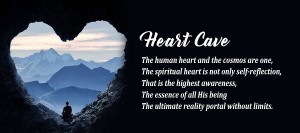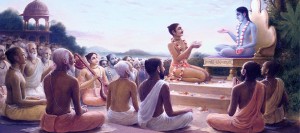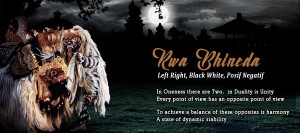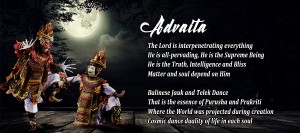The literal meaning word Mandala means circle, and circle mandalas are also one of the most commonly available forms of mandalas also known as Yantra. Circles have very powerful significance in countless religions and traditions, primarily Hinduism and Buddhism. We first saw their emergence in regions across the Himalaya and India, where people used the artistic expression of mandalas to form symbolic relationships between the universe and the spirit.
Ancient Hindu scriptures depict mandalas as a period of creativity, of powerful existence, and a symbol of deeper connection with the self and the universe at large. In modern-day, mandalas have become a popular symbol of meditation, which aids in enhancing focus, silencing thoughts while meditating, combatting stress and anxiety, appreciating the beauty of nature, and forming a greater connection with oneself.
Most of the mandala patterns and designs that have risen to popularity in the modern world trace their roots back to Tibetan Buddhist cultures, where spiritual significance represents the purity and sacredness of existence, as highlighted by the Buddha. These mandalas can be described as highly complex paintings with captivating detail vibrantly rich colors that depict the cosmological traditions of Hindus and Buddhists.
In Hinduism, mandalas are a tool to view the spiritual universe and represent the cycle of occurrence, reoccurrence, and existence. Many of these designs are symbolic of Hindu deities, such as Ganesha, Saraswati, and others.
Carl Jung, a popular Swiss psychoanalyst, was the first to introduce mandala to western thinkers and scholars after becoming fascinated by the therapeutic powers. He believed that mandalas where symbolic of the psychological and spiritual self and they lead to greater awareness of life and spirit.
This ancient Eastern art is an extremely popular expression that helps countless individuals regain their focus, their confidence, and their concentration by forming a deeper connection with their real self. Modern consumerism has associated mandalas with the bohemian lifestyle, thus marking its emergence in home décor, fashion, accessories, beauty and other aspects of our life.
These beautiful designs can be used to brighten up our home and help us achieve our goals of greater personal growth.
The beautiful lotus flower has deep-rooted significance and symbolism in Asian cultures, particularly the religions of Hinduism and Buddhism. In Buddhism, the lotus is regarded as a symbol of leaving behind the material world and forming a spiritual union with the universe at large.
It can also be seen as a symbol of enlightenment, as the Gautama Buddha was said to have used the lotus to demonstrate how the soul can never become burdened by the dirt of the body as the lotus can never be touched by the dirt of the soil.
In Hinduism, the Lotus is a symbol of the virtues of the human soul, and how it can break down all physical barriers that limit its ascension. It is also a symbol of creativity and wealth, often associated with deities like Sarasvati, Lakshmi and Durga.
Lotus Mandalas are extremely popular in meditation designs for they promote greater spiritual growth and aid in actualizing enlightenment. Experts believe that the most spiritually beneficial form of the lotus mandala contains 1,000 petals, however, artists often find it hard to incorporate so many petals into the complex designs of mandalas. Therefore, the number of petals is reduced to symbolize the sacredness of the design.
- Sri Yantra – Featuring sixteen lotus petals that are circled by a very complex design of intermingling triangles, the Yantra is a symbol of awareness without dichotomy.
- Garbhadhatu Mandala – This design is symbolic of the Buddhist Womb Realm, the dwelling place of several Buddhist deities from the Japanese and Chinese sects.
- Nava Padma Mandala – This exquisite lotus design features a huge flower in the center, and it is very popular in Parameshwara ceremonies.
- Ganesha Yantra – Symbolic of the Hindu deity Ganesha, it features him sitting on a lotus revealing his true spiritual state.
- The Trident Yantra – This design features a peace-symbolizing lotus with a pointed trident to demonstrate the relationship between the phenomena of war and peace.
Elephant Mandalas
The elephant symbolizes great power and strength, and the resolute nature that refuses to yield its conscience. In Buddhism, the gray elephant is regarded as a sign of a mind that is yet to be trained and one that is likely to be distracted from the road to enlightenment. While the white elephant represents the state of true enlightenment, which can only be achieved by controlling one’s thoughts and practicing mindful meditation.
Experts agree that the elephant mandalas represent both physical and mental capabilities to highlight the true strength of the soul. It is also regarded as a symbol of fortune, material growth, luck, and rain. It can be seen as a form of the Buddha and the Hindu deity Ganesha. The Elephant has a strong significance in Buddhism for the Buddha Shakyamuni was said to have born in the form of an elephant, and when he acquired enlightenment, he turned into a white elephant. The elephant also happens to be one of the Seven Royal Symbols.
Elephant mandalas have become extremely popular in Western cultures and they are increasingly being associated with bohemian lifestyles, clothing staples, home décor, posters, and lots more. The Elephant mandala design was first introduced in Western society by the prominent psychoanalyst, Carl Jung, as he realized the potential of personal growth and spiritual development that this design offers to individuals with complex personalities.
Mostly, people find themselves attracted to the plethora of bright colors and the complexity of elephant mandala designs, but experts believe that exploring the deeply embedded meanings behind this design can make a person much more aware of their own spirituality, thus actualizing greater inner peace.
Flower Mandalas
The Flower of Life features a complex geometric design where countless overlapping circles are arranged in the appearance of flower petals. These designs are said to have originated in Northern Africa and Mesopotamia, while some can even be viewed on Egyptian temples of Osiris.
Experts are unclear about the exact symbolism of the flower, but modern users believe that it is a sacred geometric shape that promotes focus and concentration during meditation by eliminating distractions. Often, the Flower is compared to the mandalas commonly used in Hinduism and Buddhism because of its overlapping circles and flower-like design. Modern artists and spiritual healers agree that it is a powerful tool for spiritual growth.
Basically, the Flower represents the existence of all creation in the universe, thus making it a powerful symbol of enlightenment and greater spiritual growth. It represents the Tree of Life, which symbolizes both, our material reality and non-physical growth.
It is often regarded as a route to travel through various dimensions to form a connection with your soul and attain completion.
Flower Mandalas are also associated with unlocking good health and a mindful lifestyle, which makes them perfect for all artistic uses, be it tapestries, curtains or other home décor inspirations. It doesn’t have any specific religious ties, so you can even wear it as clothing staples or accessories.
Circle Mandalas
Circle mandalas are undoubtedly the most attractive and common designs and they are famous for their power of drawing in the onlooker to an extent that we imagine ourselves dwelling within the design of the mandala. Basically, this is a reaction that we all experience while viewing circles, which is why circle mandalas are extremely effective at encouraging and inspiring.
The circle itself is symbolic of the wholeness of the man, and it represents the entirety of our psyche, to exhibit the divinity of the Self. Carl Jung, a prominent psychoanalyst, was responsible for introducing the therapeutic benefits of mandalas, especially mandala coloring, and he was a huge proponent of using circle mandalas for their spiritual healing powers.
In most cultures, the circle is a symbol of unity, wholeness, and oneness, and it also symbolizes the womb, motherhood and the act of nurturing. Experts believe that in mandalas, the circle symbolizes both, new beginnings and a state of completion.
If you are seeking a circle mandala to boost concentration and enhance focus, invest in a Bull’s eye mandala design, as it features circles within circles, which will draw your attention instantly. It can help you focus your attention during meditation, along with generally aiding in enhancing your focus and concentration abilities.
Experts believe that various circle mandalas have various different symbolisms. For instance, the five-fold Celtic, which features four circles that form the fifth circle in the center, can be a symbolism of the compass that points out all the directions: east, west, south, north and the center. Similarly, it can even be a symbolism of the four seasons, while the fifth circle symbolizes transit, or it could even be a symbol of the elements: air, water, earth, fire, and aether.
You can pick out circle mandalas in countless color combinations, shapes, patterns and mediums, for it has emerged as an extremely expressive and popular form of artistic inspiration. It can be painted, drawn, printed, and even used in collages, fiber art, fabric art, and sculpturing. You can add it to clothing, home décor, curtains, tapestries, table runners, banners, and a lot more. For its beauty and intricacy will amplify the attraction of anything and everything it is added to.
Circle mandala designs have grown extremely popular in jewelry, and if you’re a true bohemian at heart, you must invest in some pendants and earrings featuring colorful circle mandalas. You can pick out these designs made with intricate beads, rare gemstones, metals, Silver filigree, strings, and even tassels.
Colouring circle mandalas has been associated with countless therapeutic benefits, be it for fighting off anger, regaining focus, calming away stress or eliminating anxiety. You can also reap these benefits by hanging colorful circle mandalas in your study area, balcony, and other areas where you work, meditate or practice yoga.
Geometric Mandalas
It is believed that geometric mandala designs are giving a deeper spiritual symbolism for observing the mechanisms of nature, along with the inner and external structures of the human body. Thereby, these complex designs allow thinkers to form a deep connection with man, nature and spirit.
Geometry can take the shape of anything and everything in nature, be it a tiny shrub, a coastline or an attractive landscape.
The foundation of sacred geometry is taken from the magic circle, which is a representation of spiritual energy in countless religions and cultures across the world. All mandalas are based on a circle and then infused with other designs to form a deeper meaning.
Geometric mandalas are said to vary according to various cultural and religious significance, but there are several designs that have become increasingly popular for their countless meditative benefits. When creating a geometric mandala, one has to start from the center, allowing the geometric shapes to radiate from the center. Often we see a torus, which is basically an amalgamation of two circles that rotate from the same center. The Egyptian pyramids are also a common design, featured as right-angled triangles infused with other shapes.
We also see platonic solids, polygons and other shapes used to build up and fill up the geometric patterns. In other designs, the flower is created to surround the design with overlapping circles, which is extremely famous in accessories and jewelry items. If you prefer a more simple design, you can pick out geometric mandalas featuring simple lines.
If you are seeking a geometric mandala design to achieve meditative benefits and become more grounded as a person, it is highly advisable to first understand the purpose behind the design. We suggest you start your journey with a simple design, rather than complex designs that might complicate things unnecessarily.
Geometric patterns are extremely popular for their modern minimalist vibe, and you can even use them as tapestries, curtains and other home décor uses.





